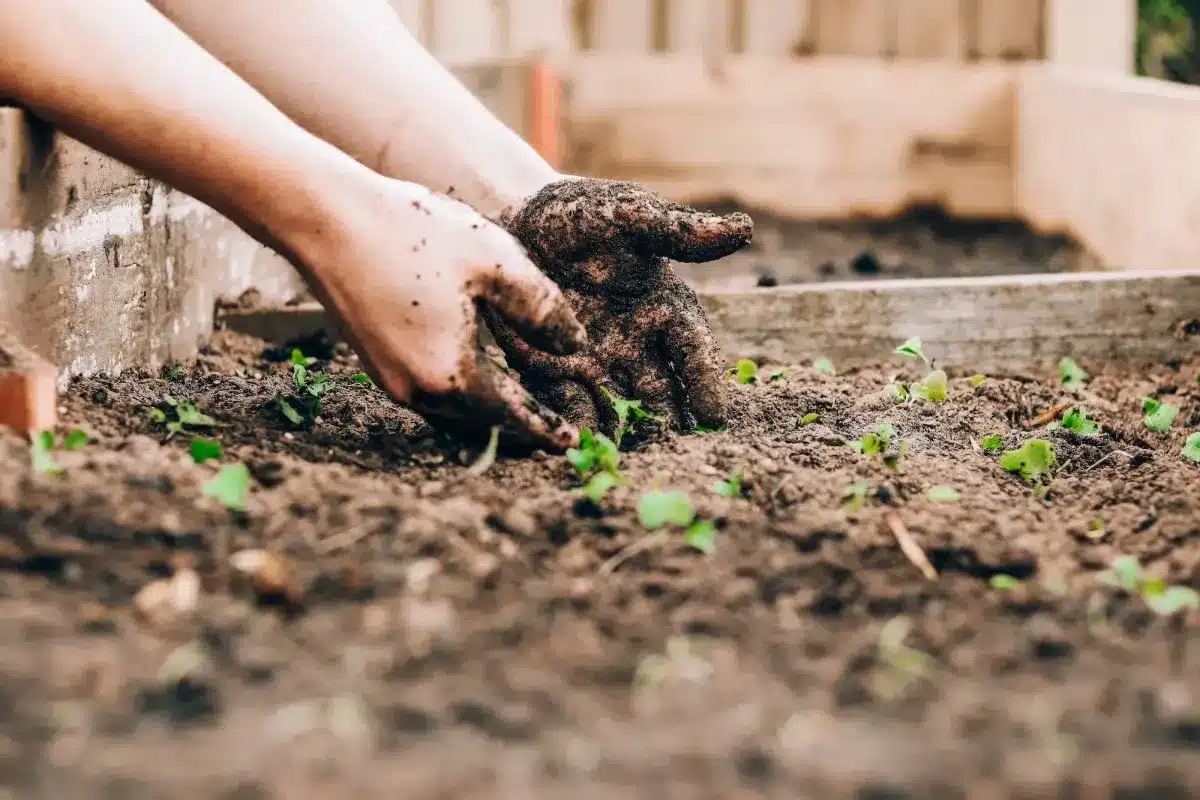You’ve chosen a spot, prepped your soil, and now it’s time for the exciting part – deciding what to plant!
If you missed Part 1 and Part 2, we suggest reading them now before moving on to Part 3:
Read Part 1: Choosing the right location
Read Part 2: Prepping the soil
With the chilly weather fully upon us, we’ll highlight some of the best go-to winter veggies to get your garden started.
Cauliflower
Cauliflower is one of the most versatile and delicious veggies to grow in winter. It needs cold temperatures and constant moisture when it matures. Cauliflower also needs rich soil with plenty of compost. It produces a better head if grown in firm soil.
Cabbage
Cabbage can be grown throughout the year, although it shouldn’t mature in midsummer. You also shouldn’t sow cabbage seeds in midwinter. Cabbage likes full sun, and it needs soil enriched with well-decomposed compost.
There are a number of different types of cabbage in an assortment of colours and shapes. You can stagger your harvest by planting varieties that have different harvest times.
Place your cabbage plants at least 30cm apart and harvest them when the head is firm, as they become bitter if they remain in the ground too long.
Both cabbage and cauliflower are bud-developing plants with four growth stages:
- Develop roots and leaves
- The outer leaves develop
- Nutrients build up in the outer leaves
- Once enough nutrients have been stored, the plant transfers them from the older outer leaves to the internal buds.
Since all the growth comes from the outer leaves, it’s important to feed cabbage and cauliflower with a balanced diet before the heads begin to develop. Products such as SeaBrix° and Triple Ten™ should be applied as foliar feeds. Mix the SeaBrix° at 10ml/10L and Triple Ten™ at 5ml/10L. They can be applied together for optimum results.
Asian Greens
Asian greens such as mizuna, mustard and pak choi grow quickly and provide tasty winter greens for salads and stir-fries. Like all members of the Brassica family, Asian greens thrive in cooler weather. When the weather becomes too hot, they become more pungent, toughen up, and go to seed quicker.
You can either buy seedlings or grow Asian greens from seed. They grow well in moist, well-drained, fertile soil. During the winter months, plant them in a spot with full sun.
Companion herbs
Winter leafy greens such as cabbage, cauliflower and Asian greens are all happy growing together. But planting them with companion herbs encourages better growth and helps to create a healthier environment.
These herbs repel pests and attract beneficial insects:
- Rosemary: Also adds delicious flavour to hearty winter roasts
- Mint: Choose from a wide variety of flavourful mints to plant alongside your greens
- Dill: This quick-growing herb needs lots of sunlight.
| Caring for your herbs in winter Even though growth slows down in winter, it’s still important to fertilise with SeaBrix° and Triple Ten™ every week – throughout the summer too!Potted herbs generally only need to be watered once or twice a week in winter, preferably in the morning. Don’t put saucers underneath the pots as herbs don’t like wet feet, good draining is critical so use the correct potting medium from Organic for Africa.Harvest small quantities at a time, always leaving two growth points on the twig for re-shooting. |
Other edibles to grow in winter:
(Check to see how they will fare in your climate)
- Rocket
- Horseradish
- Asparagus
- Globe artichokes
- Rhubarb
- Lettuce
- Broccoli
- Spinach
- Beetroot
- Turnips
- Brussel sprouts
- Celery
- Peas
- Leeks.
Although most cool-season veggies can withstand light frost, you may need to protect your veggies with frost cloth, cloches made from plastic cooldrink bottles, or a growing tunnel if you expect heavy frost in your area. Remember to remove these coverings during the day to expose the leaves to sunlight.
| Top tips for winter growing • Mulch well around your plants to protect the roots from cold and frost • Keep veggies well-watered to ensure the soil stays moist but not wet • Keep clearing away old plants and removing weeds • Feed seedling with SeaBrix° and Triple Ten™ at the rate recommended earlier in this blog to help them resist the cold • Brassicas (cruciferous vegetables such as broccoli, cauliflower, and cabbage) need a fertiliser high in nitrogen such as Triple Ten™ (high in all three macro elements – N,P and K) • Don’t overcrowd plants • Remove and control weeds • Check for pests regularly so that you can take immediate action, |
In our next article, we’ll focus on pest control to help you keep your garden healthy and thriving.
Later in the year, we’ll also give you some ideas for what to plant in other seasons.
Although not (yet) packaged for domestic use, our Zylem products (such as NanoCal, SeaBrix° and Triple Ten™ ) help to keep winter gardens healthy. Get in touch with the Zylem team to find out more. Contact us on 033 347 2893 or send us an enquiry.
About Organic for Africa
Situated in the timber-growing countryside of Greytown, Organic for Africa produces a wide range of products from growing medium and compost to specifically screened seedling mixes, various mulches as well as customised and specific mixes. All products are sourced from all-natural and renewable resources and free from harmful bacteria and chemicals.

